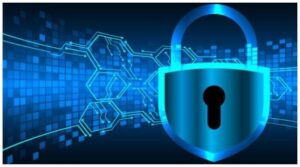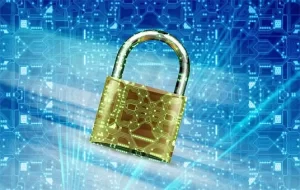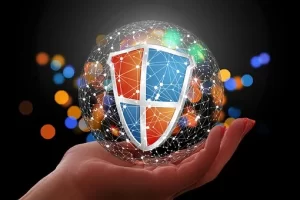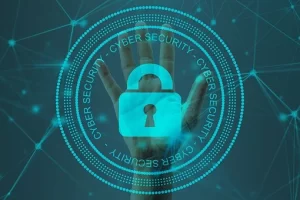DATA - LEAKAGE PREVENTION (DLP)
What is Data Leakage Prevention?
The flow of sensitive data out of an organization is referred to as “Data leakage”, on the other hand this method of stopping data from leaving the company and being accessed by an unauthorized party is known as “Data leakage prevention“.
To put it another examples. Furthermore, data leakage can take the form of physical or electronic communication. Data leakage can be accidental or deliberate. Consider the scenario of an employee carrying an office report home and forgetting it inside a bus or train, where it is taken by someone else. This is an example of an inadvertent data leakage scenario. Consider the situation where an employee sends a key file from the company to someone who does not have the legal authority to receive it. This is deliberate data leakage in this case. Data Leakage Prevention guards against internal and external attacks on your information infrastructure, as well as mistakes that lead to data leaks and intentional exploitation by insiders. The loss of sensitive data and other types of business information can result in major financial losses as well as damage to the company’s reputation.
Way, data is sent to someone outside the corporation. The information could be from an organization’s essential system. Human resource data, ERP data, and cloud data are just a few
When it comes to data breaches, organizations are not always held liable. However, a corrosive and alarming streak of big breaches, which continues to rise, has prompted governments to take harsh measures against businesses. Fines for data breaches serve as a wake-up call for all businesses. The resolution of such occurrences necessitates a proactive strategy. Organizations can quickly manage cloud database misconfiguration, as well as vulnerability gaps, unsafe software and system components, and breach response.
DLDP systems can utilize a variety of approaches to detect sensitive data leakage during channel monitoring, including content matching, picture recognition, fingerprinting, and statistical analysis.
Causes of Data Leaks
Three common causes of data leaks are:
- Insider threats — A malicious insider, or an attacker who has compromised a privileged user account, abuses their permissions and attempts to transport information outside the employer.
- Extrusion through attackers — Many cyber assaults have touchy information as their goal. Attackers penetrate the security perimeter the use of techniques like phishing, malware or code injection, and gain access to sensitive facts.
- Unintentional or negligent data exposure — Many records leaks arise because of personnel who lose sensitive facts in public, offer open net get admission to to records, or fail to restrict get admission to according to organizational regulations.
Why is Data Leakage Prevention required?
Breach can result in the loss of private records and sensitive data, in addition to costing businesses a lot of money. Not only may a breach damage an organization’s customers and employees, but it can also affect its customers and employees. Cybercriminals can make more money by duplicating credit cards, leveraging personal information for fraud, identity theft, and even blackmail using the data taken after a breach. This private information is occasionally sold in bulk on the dark web. Usernames, dates of birth, social security numbers, user identification numbers, email addresses, postal addresses, physical addresses, phone numbers, banking account numbers, medical information, claims information, and more can all be compromised as a result of data breaches.
Organizations could greatly improve their security and better secure their corporate and consumer data by using detection management and incident response strategies.
Organizations must ensure that they have put in place the necessary security measures to detect and report data breaches in accordance with data protection legislation.
To minimize future breaches, organizations must prioritize these objectives and guarantee that the finest solutions are in place.
Data Leakage Prevention
You may use general security gear to shield against statistics loss and leakage. For instance, an Intrusion Detection gadget (IDS) can alert approximately attacker tries to get entry to to sensitive facts. Antivirus software program can prevent attackers from compromising sensitive structures. A firewall can block get right of entry to from any unauthorized party to structures storing sensitive records.
In case you are part of a big enterprise, you might flip to distinct DLP gear or answers to safeguard your records. You can additionally use tooling within the safety Operations center (SOC) to assist with DLP. As an example, you can use a security information and event management (SIEM) system to come across and correlate activities which would possibly represent a facts leak.
Best Practices for Preventing Data Leaks by Accident:
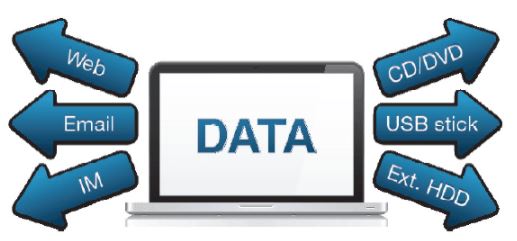
Data leaks aren’t always the result of nefarious behavior. In many situations, it’s the consequence of an honest mistake—someone sends an email to the wrong recipient, forgets to encrypt a piece of data they’re sending, or mistakenly downloads important files to an unsecured home computer via USB drive.
The following are some best practices that your company can take to reduce the danger of data leakage by accident:
- Data Access with a Policy of Least Privilege (POLP): It’s difficult for someone who doesn’t have access to data to mistakenly release it. A least privilege policy limits each user’s data access to the bare minimum required to carry out their job function. Using such a strategy also helps to reduce the possibility of data leaks that are done on purpose.
- Limit the email domains to which employees can send attachments on company systems: Some email programs and applications let you organize people into groups or organizations, as well as manage out-of-group interactions to some extent. When sharing access to a file with someone outside the employee’s organization, For example, Google Drive can be customized to display a confirmation screen/warning. These kinds of alerts can greatly reduce the likelihood of data being shared unintentionally.
- Establish and enforce a Bring-Your-Own-Device (BYOD) Policy: A bring your own device (BYOD) policy can assist your company in defining the rules for when and how employees can use personal devices in the workplace, such as cellphones, laptops, USB drives, and other devices that can copy, store, and transfer data. It can lessen the danger of inadvertent data leaking if such gadgets are not allowed (or their use is regulated) in the workplace.
- Provide Cybersecurity Awareness Training: Employees should be aware of not just the most serious data leak dangers, but also the potential consequences of such leaks for the company. Employees who receive this type of awareness training are less likely to make basic errors that result in data leaks. It can also assist staff in detecting phishing attempts and other data-stealing tactics used by bad actors.
Data Leakage Prevention Solution
Components of a Data Leakage Prevention Solution
- Securing data in motion — Technology set up on the network facet can examine traffic to locate touchy information dispatched in violation of safety policies.
- Securing endpoints — Endpoint-primarily based agents can manage information transfer among customers, corporations of users, and outside parties. A few endpoint-primarily based structures can block tried communications in actual time and provide user comments.
- Securing facts at relaxation — Get admission to manipulate, encryption and records retention policies can defend archived organizational records.
- Securing data in use — A few DLP structures can screen and flag unauthorized activities that users may additionally intentionally or accidentally carry out in their interactions with data.
- records identity — It is crucial to decide if information needs to be covered or not. facts can be defined as touchy both performed manually by means of applying regulations and metadata, or routinely via techniques like gadget getting to know.
- information leak detection — DLP answers and different protection systems like IDS, IPS, and SIEM, become aware of statistics transfers which might be anomalous or suspicious. These solutions additionally alert protection group of workers of a likely data leak.
DLP Solutions and Document Security Answers
Report protection answers, including Imperva record Firewall, are an important a part of a DLP approach. Such solutions shield statistics at rest and records in use, and locate leaks of record-based totally facts.
Imperva file Firewall helps prevent data leaks by:
- Monitoring access to all sensitive files and recording granular utilization records which include user, department, document accessed, record kind and operation response time.
- Alerting on, and automatically blocking off, report moves that violate security guidelines.
- Detecting strange or suspicious user behavior the use of device learning, to locate insider threats.
- Mitigating Ransomware attacks by detecting and blocking off common document get admission to styles.
- Auditing and reporting on all document operations for compliance and investigation purposes.
Why Cybercure for Data Leakage Prevention?
The success of a DLP program depends on a well-planned DLP strategy and deployment.it is also important to know and recognize the organization’s business version. knowledge of where the most critical information is stored and the way it’s far accessed is key to the success of the DLP approach.
by using knowledge the basic standards and components of DLP, your DLP approach will lead to the established order of a a success program so as to offer governance round facts protection in your organisation now and for future years.
In order to maintain safety and security, Cybercure is continuously enhancing “Data Leakage Prevention” tools and processes to protect data, while respecting data privacy regulations around the world.
Arrange a Demo, Get in touch
Looking for something Else?
Consulting
- Extensive Web Application Security Testing (WEB VAPT)
- ISO 27001:2013 Audit and Certification
- GDPR, CCPA Rediness Audits
- IT Process Audit
- Network Security Audit
- Mobile Application Security Audit (VAPT)
- Firewall Assessment - Policies Audit
- Cyber Crime Investigation
- Employee IT Security Awareness programs
Services
Solutions

